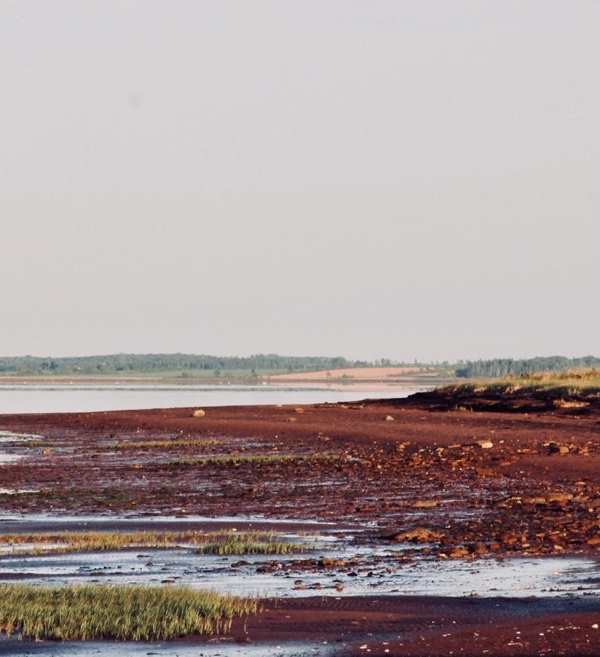Le roller sur le passé : une déconstruction d'un espace urbain sociohistorique
DOI :
https://doi.org/10.25071/1916-4467.40593Mots-clés :
sociohistorical spaces, repeated representation, racism, banality of Whiteness, somatic disorientation/reorientationRésumé
Considérer le roller comme une forme de marche, je réfléchis de manière critique à mon expérience du roller pour travailler au centre-ville de Toronto. Je ne me suis jamais demandé à qui appartenaient la terre sous ces routes, ce que cela signifiait que je pouvais lire tous les noms de rues, ni mes sentiments d'appartenance inconditionnelle en tant qu'homme de race mixte, qui passait pour un blanc et alphabétisé anglais. Dans cet article, je soutiens que des éléments quotidiens du paysage urbain ont (re) façonné une géographie sociohistorique raciste et ma place en son sein. J'emploie comme cadre le concept d'articulation de Hall (1980), la compréhension de Stanley (2011) des racismes comme exclusions et le concept de Puwar (2004) de la dissonance somatique. À travers cette lentille, je déconstruis comment mon acte de roller a illustré la banalité de l'espace sociohistorique de la ville et a incarné sans le savoir la domination de la blancheur.Références
Brown, K. G. (2018, July 5). Slavery’s long shadow: The impact of 200 years enslavement in Canada. CBC Radio Ideas. https://www.cbc.ca/radio/ideas/slavery-s-long-shadow-the-impact-of-200-years-enslavement-in-canada-1.4733595
Casagranda, M. (2013). From Empire Avenue to Hiawatha Road: (Post)colonial naming practices in the Toronto street index. In O. Felecan (Ed.), Proceedings of the International Conference on Onomastics “Name and Naming” (Vol. 2, pp. 291-302). https://onomasticafelecan.ro/iconn2/proceedings/3_06_Casagranda_Mirko_ICONN_2.pdf
Chan, A. (2011). The Chinese in Toronto from 1878: From outside to inside the circle. Dundurn.
Cole, D. (2015, April 21). The skin I’m in: I’ve been interrogated by police more than 50 times—all because I’m black. Toronto Life. https://torontolife.com/city/life/skin-im-ive-interrogated-police-50-times-im-black/
Errett, J. (2016, May 7). Was Jarvis street named after a city-builder, or a slave-owner? Prepare for a debate. CBC News. https://www.cbc.ca/news/canada/toronto/jarvis-street-slavery-1.3564667
Freeman, V. (2010). “Toronto has no history!”: Indigeneity, settler colonialism, and historical memory in Canada’s largest city. Urban History Review/Revue d'histoire urbaine, 38(2), 21-35. DOI: https://doi.org/10.7202/039672ar
Grant, J. L. (2001). The dark side of the grid revisited: Power and urban design. In R. Rose-Redwood & L. Bigon. (Eds.), Gridded worlds: An urban anthology (pp. 75-100). Springer. DOI: https://doi.org/10.1007/978-3-319-76490-0_5
Hall, S. (1980). Race, articulation, and societies structured in dominance. In UNESCO (Ed.), Sociological theories: Race and colonialism (pp. 305-345). UNESCO.
Henry, N. (2018, August 1). Freedom abound: Celebrating Emancipation Day in St. John’s Ward, 1845-1860. Spacing. http://spacing.ca/toronto/2018/08/01/freedom-abound-celebrating-emancipation-day-in-st-johns-ward-1845-1860/
Ibrahim, A. (2004). One is not born Black: Becoming and the phenomenon(ology) of race. Philosophical Studies in Education, 35(1), 77-87. http://ovpes.org/wpcontent/uploads/2012/01/ibrahim2004.pdf
Kobayashi, A., Cameron, L., & Baldwin, A. (Eds.). (2011). Rethinking the great white north: Race, nature, and the historical geographies of whiteness in Canada. University of British Columbia Press.
Kumashiro, K. (2002). Against repetition: Addressing resistance to anti-oppressive change in the practices of learning, teaching, supervising, and researching. Harvard Educational Review, 72(1), 67-92. https://vula.uct.ac.za/access/content/group/25f04c1d-1bf4-497a-bdb5-e12357b066ef/Test/Kumashiro%20-%20Against%20Repetition.pdf DOI: https://doi.org/10.17763/haer.72.1.c11617526l7k46v6
Levine, A. (2014). Toronto: Biography of a city. Douglas & MacIntyre.
Lorinc, J., McClelland, M., Sheinberg, E., & Taylor, T. (Eds.). (2015). The Ward: The life and loss of Toronto’s first immigrant neighbourhood. Coach House Books.
Maynard, R. (2017). Policing Black lives: State violence in Canada from slavery to present. Fernwood.
Mississaugas of the New Credit First Nation. (2018). The Mississaugas of the Credit: Historical territory, resource and land use. http://mncfn.ca/wp-content/uploads/2018/08/The-Mississaugas-of-the-Credit-Historical-Territory-Resource-and-Land-Use.pdf
Moreton-Robinson, A. (2015). The white possessive: Property, power, and Indigenous sovereignty. University of Minnesota Press. DOI: https://doi.org/10.5749/minnesota/9780816692149.001.0001
Murdie, R. A., & Teixiera, C. (2000). Towards a comfortable neighbourhood and appropriate housing: Immigrant experiences in Toronto. Center of Excellence for Research on Immigration and Settlement. http://ceris.ca/wp-content/uploads/virtual-library/Murdie_et_al_2000.pdf
Puwar, N. (2004). Space invaders: Race, gender and bodies out of place. Berg.
Shadd, A., Cooper, A., & Smardz Frost, K. (2005). The underground railroad: Next stop, Toronto! Natural Heritage Books.
Smardz Frost, K. (2017). Steal away home: One woman’s epic flight to freedom—and her long road back to the south. Harper Collins.
Smith, B. (2017). Cartographies of colonial commemoration: Critical toponymy and historical geographies in Toronto. Journal of the Canadian Association for Curriculum Studies, 15(2), 34-47. https://jcacs.journals.yorku.ca/index.php/jcacs/article/view/40297/36286
Stanley, T. J. (2011). Contesting white supremacy: School segregation, anti-racism, and the making of Chinese Canadians. University of British Columbia Press.
Toronto Ward Museum. (2020). About the Ward. http://www.wardmuseum.ca/picturingtheward/theward/
Upward, C., & Davidson, G. (2011). The history of English spelling. Wiley-Blackwell. DOI: https://doi.org/10.1002/9781444342994
Winks, R. W. (1997). The Blacks in Canada: A history (2nd ed.). McGill-Queen’s University Press.
Téléchargements
Publié-e
Comment citer
Numéro
Rubrique
Licence
© Mark Currie 2021 
Copyright for work published in JCACS belongs to the authors. All work is licensed under a Creative Commons Attribution-ShareAlike 4.0 International license.


